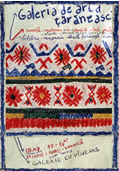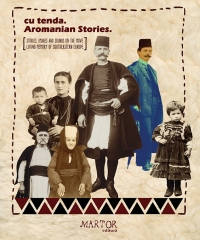Dacă nu vă mai amintiţi sau n-aţi ştiut niciodată cum e să te aşezi pe băncuţă la pupitru şi să priveşti panourile ilustrate de pe pereţii clasei, cu plante şi animale sau cu ziceri înţelepte ce trebuie memorate, cum ar fi CE E RĂU, NU E BINE, puteţi veni la Şcoala Satului, unde se ţin lecţii, dezbateri, vizionări sau audiţii. Între orele 12-14, în fiecare marţi, miercuri, joi şi vineri, puteţi consulta arhiva de memorie vizuală realizată de Fundaţia Arte Vizuale şi puteţi privi la tot ceea ce se mai păstrează astăzi din tradiţiile ţărăneşti româneşti. La Şcoala satului puteţi veni la orice vârstă.
Call for Papers // MARTOR 26/2021 // VISUAL ETHICS AFTER COMMUNISM
Guest Editors:
Dr James Kapaló (Principal Investigator Hidden Galleries ERC Project, University College Cork)
Dr Gabriela Nicolescu (Curatorial Lead, Hidden Galleries Project, University College Cork)
Dr David Crowley (National College of Art and Design, Dublin)
Deadline for abstract submissions: 4th of May 2020.
Publication date: November 2021.
The Museum of the Romanian Peasant is seeking contributions for its annual journal Martor 26/2021, on the topic of Visual Ethics after Communism. Martor is a peer-reviewed academic journal, established in 1996, indexed by EBSCO, Index Copernicus, CEEOL, AIO, and MLA International Bibliography, with a focus on cultural and visual anthropology, ethnology and museology.
This special issue to appear in 2021 will problematize the often-uncritical use of images in publications and displays about communism. This themed issue will pose a number of questions for anthropologists, historians, museologists and others. When does an image or a museum display present itself as problematic and for whom? Under what circumstances is it ethically justifiable to exhibit or publish such images or, conversely, to put images aside, leaving them undisplayed? When do arguments based on “the public good” outweigh the right to personal privacy, individual integrity and cultural patrimony of source communities? Inspired by recent debates on the ethics of the use of Holocaust and atrocity photography and colonial-era images of indigenous ‘others’, the contributions to this issue will address the use of images of unwilling participants taken through a hostile lens. The issue invites researchers and curators to find inspiration in various kinds of archives: both personal and institutional.
We invite researchers working on Central and East European countries and other post-totalitarian societies to address questions of the contextualization and re-classification of images and displays, of dispossession and repatriation of confiscated community and family photographs, and the role that images and material displays play in the formation of personal, collective and national memory.
The volume will give priority to six individual articles (6 to 10,000 words). These will be supplemented by shorter texts (2.000 – 4.000 words) where more experimental writing, interviews or exhibition reviews are invited for publication. Please follow the guidelines for authors of the Martor journal:
http://martor.muzeultaranuluiroman.ro/for-authors/.
Martor is a journal where authors are encouraged to publish experimental ethnographic research and accompany their text with high standard visual material, thus, all contributors are encouraged to use ample images to accompany their texts.
We invite contributors to send an abstract (300 words) by May 4th, 2020.
The selected articles will need to be submitted by Friday 11th of September 2020.
Submissions will be in either English or French.
Proposals, manuscripts, and other editorial correspondence should be sent to the following e-mail: revistamartor@gmail.com.
înapoi la pagina principală






















(1).jpg)


















.jpg)
.jpg)







